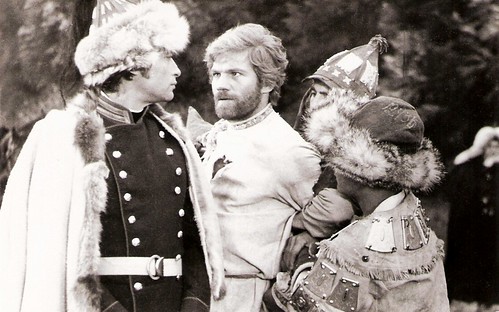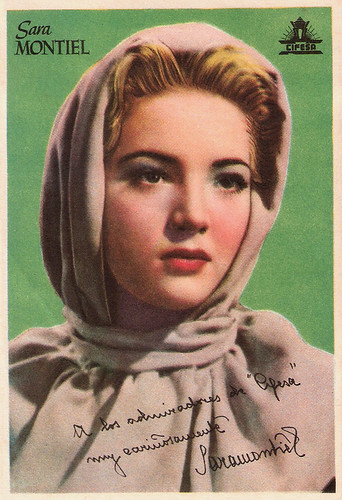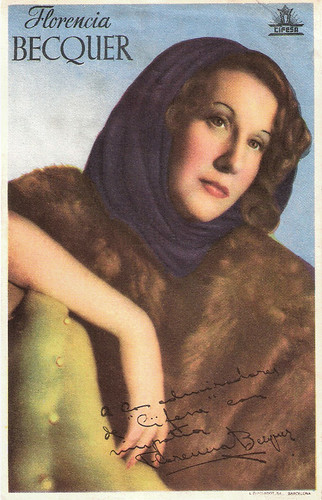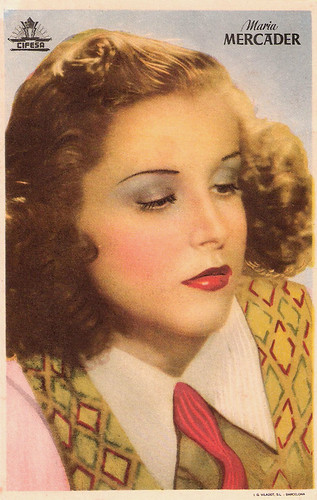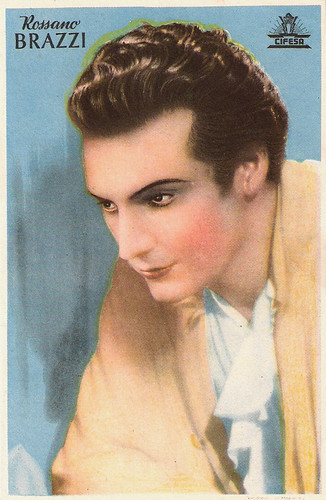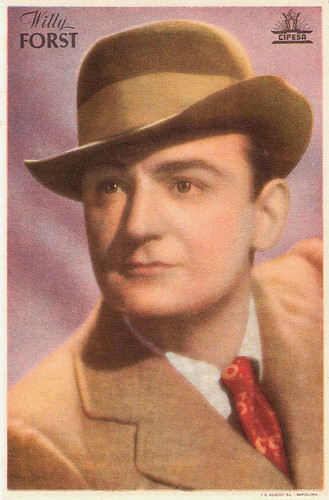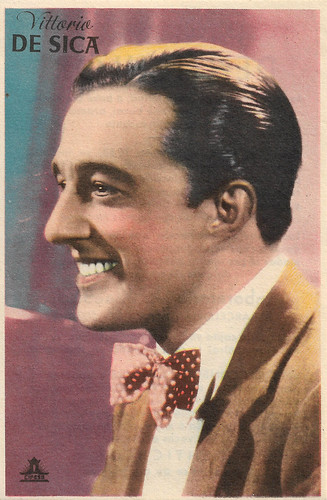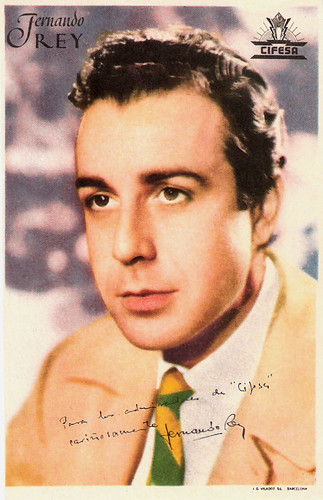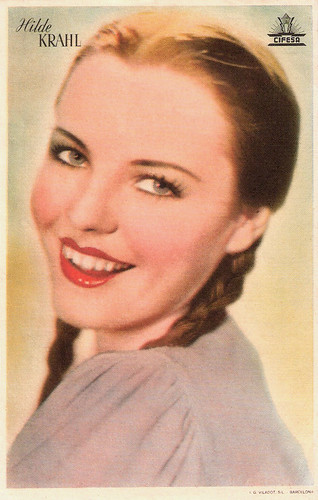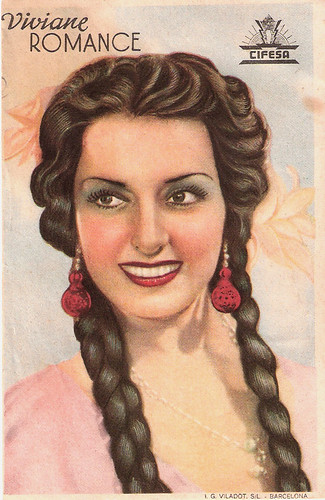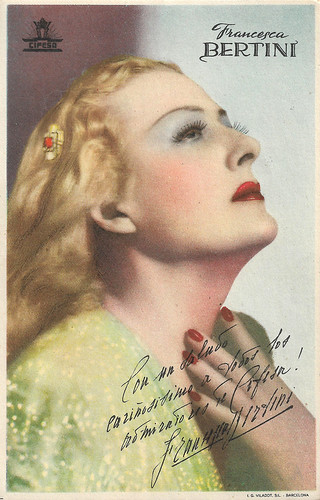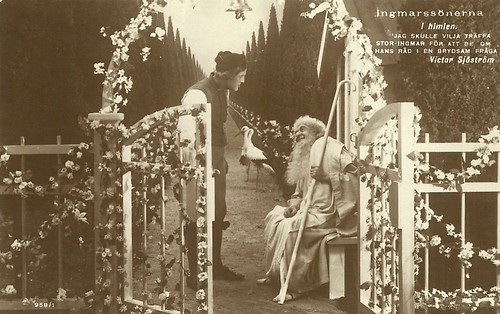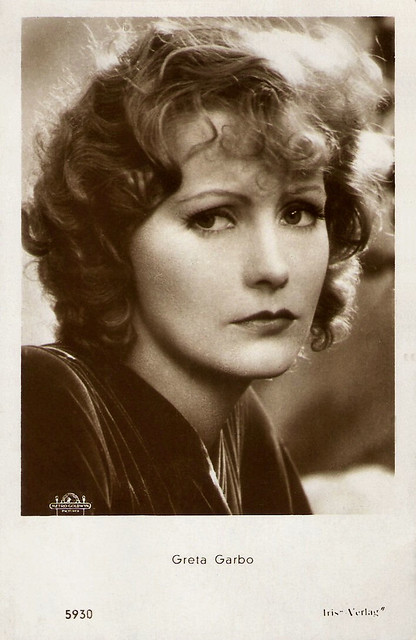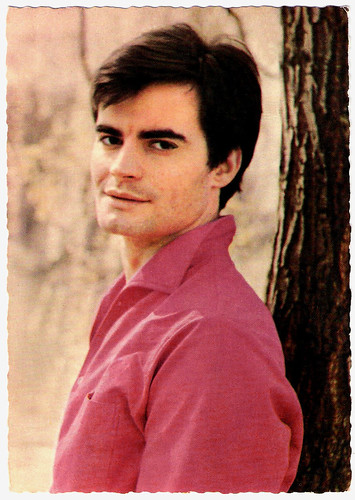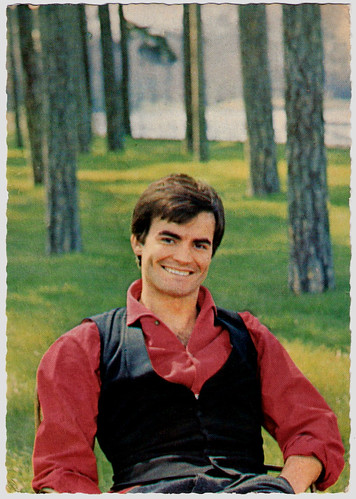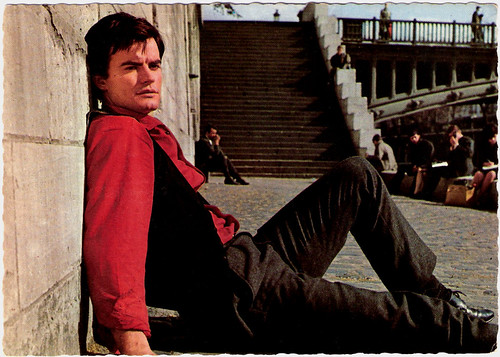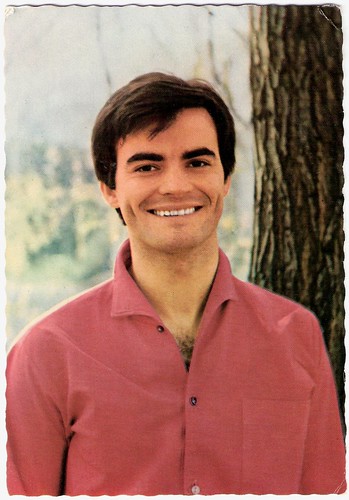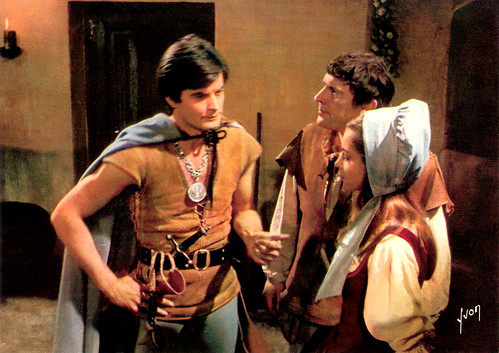English actress, Dame Celia Johnson (1908-1982) became an icon of British cinema with her role opposite Trevor Howard in the romantic drama Brief Encounter (1945). She generally played a genteel or repressed Englishwoman in films, though she also proved to be a talented comedian.

British postcard in the Picturegoer Series, London, no. W. 215. Photo: Cineguild.
Celia Elizabeth Johnson was born in Richmond, England, in 1908 and was the second daughter of Robert Johnson and Ethel Griffiths. She was educated at St Paul's Girls School in London. Celia acted in school productions but had no other acting experience when she was accepted to study at the Royal Academy of Dramatic Art. She later spent a term in Paris, studying under Pierre Fresnay at the Comédie-Française.
Her stage début was in George Bernard Shaw’s Major Barbara at the Theatre Royal in Huddersfield in 1928. Celia went to London the following year to appear in A Hundred Years Old at the Lyric Theatre. In 1930 she became an established West End star when she played in Cynara with Sir Gerald Du Maurier and Gladys Cooper. She was part of the new generation of actors, more naturalistic and working under directors, rather than the older actor-managers.
By 1931, she was starring on Broadway as Ophelia in a New York production of Hamlet. In 1935, she married Peter Fleming, an explorer and travel writer who was the brother of James Bond author Ian Fleming. Johnson made relatively few films, beginning with a role as a mother in the Oscar-nominated short A Letter from Home (Carol Reed, 1941).
During the Second World War followed three collaborations with writer Noel Coward and director David Lean. The first film was In Which We Serve (1942) about a bombed WW II destroyer starring Coward and Michael Wilding. Their second collaboration was This Happy Breed (1944) in which she is the stoical lower-middle-class housewife and mother, unbearably moving as she comes to terms with the defection - and return - of her rebellious younger daughter (Kay Walsh).
Brief Encounter (1945) is by far the best known. This is the definitive Johnson role: she makes utterly real all the constraints (and comforts) of the life of a decent middle-class wife who falls in love with a doctor. With Brief Encounter she acquired iconic status in British cinema. As Brian McFarlane observes in The Encyclopedia of British Film: “It is probably the eyes, as she acknowledged: she stares at the audience and breaks its heart as she sees her would-be lover, Trevor Howard, head off to catch his train out of her life."
For this role, Johnson was awarded the New York Film Critics Circle Award for Best Actress and was nominated for the Academy Award for Best Actress.

Trevor Howard. Dutch postcard. Photo: Eagle Lion.

Dutch postcard By WSB, no. 1047. Photo: Eagle Lion.
After the war, Celia Johnson concentrated on her family life, which included a son (1939) and two daughters born in 1946 and 1947. Her occasional acting work was secondary for the following decade. As the self-sacrificing daughter of a benignly selfish vicar (Ralph Richardson) in The Holly and the Ivy (George More O'Ferrall, 1952) and as a conscientious probation officer in I Believe in You (Basil Dearden, Michael Relph, 1952), she made goodness interesting and touching.
That she could also do comedy is seen in The Captain's Paradise (Anthony Kimmins, 1953), parodying her usual image. In the film, Alec Guinness has two wives, one (Yvonne De Carlo) in a Mediterranean port, where he takes her out and parties every night, and Celia in Gibraltar, to whom he returns for rest in front of the fire in his slippers. Celia is spoofing her own image, and the twist in the film comes when his foreign wife wants to settle down, while Celia longs to be taken out dancing.
Johnson returned to the theatre in 1957, with Ralph Richardson in The Flowering Cherry. As a member of the National Theatre Company, she appeared in the plays The Master Builder (1964) and Hay Fever (1965), and later reprised her roles in television productions.
Her films were few and far between, but among them are cherishable performances. She received the BAFTA Award as Best Supporting Actress for her role as headmistress Miss McKay in The Prime of Miss Jean Brodie (Ronald Neame, 1969) featuring Maggie Smith. Johnson won a second BAFTA for the BBC television play Mrs. Palfrey at the Claremont (Michael Lindsay-Hogg, 1973) and gave another magnificent TV performance in Staying On (1980). She was created a Commander of the British Empire (CBE) in 1958, and raised to Dame Commander (DBE) in 1981. One of their daughters is the actress Lucy Fleming.
Celia Johnson died at home in Nettlebed, England, following a stroke at the age of 73. Lucy Fleming published in 1991 a memoir of her mother, 'Celia Johnson'.
The final scene of Brief Encounter (1945). Source: BassClef707 (YouTube).
Sources: Brian McFarlane (Encyclopedia of British Film), Ed Daley (Find A Grave), Nikolas Lloyd (Lloydian Aspects - Now defunct), Wikipedia and IMDb.
This post was last updated on 23 November 2024.

British postcard in the Picturegoer Series, London, no. W. 215. Photo: Cineguild.
Established West End Star
Celia Elizabeth Johnson was born in Richmond, England, in 1908 and was the second daughter of Robert Johnson and Ethel Griffiths. She was educated at St Paul's Girls School in London. Celia acted in school productions but had no other acting experience when she was accepted to study at the Royal Academy of Dramatic Art. She later spent a term in Paris, studying under Pierre Fresnay at the Comédie-Française.
Her stage début was in George Bernard Shaw’s Major Barbara at the Theatre Royal in Huddersfield in 1928. Celia went to London the following year to appear in A Hundred Years Old at the Lyric Theatre. In 1930 she became an established West End star when she played in Cynara with Sir Gerald Du Maurier and Gladys Cooper. She was part of the new generation of actors, more naturalistic and working under directors, rather than the older actor-managers.
By 1931, she was starring on Broadway as Ophelia in a New York production of Hamlet. In 1935, she married Peter Fleming, an explorer and travel writer who was the brother of James Bond author Ian Fleming. Johnson made relatively few films, beginning with a role as a mother in the Oscar-nominated short A Letter from Home (Carol Reed, 1941).
During the Second World War followed three collaborations with writer Noel Coward and director David Lean. The first film was In Which We Serve (1942) about a bombed WW II destroyer starring Coward and Michael Wilding. Their second collaboration was This Happy Breed (1944) in which she is the stoical lower-middle-class housewife and mother, unbearably moving as she comes to terms with the defection - and return - of her rebellious younger daughter (Kay Walsh).
Brief Encounter (1945) is by far the best known. This is the definitive Johnson role: she makes utterly real all the constraints (and comforts) of the life of a decent middle-class wife who falls in love with a doctor. With Brief Encounter she acquired iconic status in British cinema. As Brian McFarlane observes in The Encyclopedia of British Film: “It is probably the eyes, as she acknowledged: she stares at the audience and breaks its heart as she sees her would-be lover, Trevor Howard, head off to catch his train out of her life."
For this role, Johnson was awarded the New York Film Critics Circle Award for Best Actress and was nominated for the Academy Award for Best Actress.

Trevor Howard. Dutch postcard. Photo: Eagle Lion.

Dutch postcard By WSB, no. 1047. Photo: Eagle Lion.
Cherishable performances
After the war, Celia Johnson concentrated on her family life, which included a son (1939) and two daughters born in 1946 and 1947. Her occasional acting work was secondary for the following decade. As the self-sacrificing daughter of a benignly selfish vicar (Ralph Richardson) in The Holly and the Ivy (George More O'Ferrall, 1952) and as a conscientious probation officer in I Believe in You (Basil Dearden, Michael Relph, 1952), she made goodness interesting and touching.
That she could also do comedy is seen in The Captain's Paradise (Anthony Kimmins, 1953), parodying her usual image. In the film, Alec Guinness has two wives, one (Yvonne De Carlo) in a Mediterranean port, where he takes her out and parties every night, and Celia in Gibraltar, to whom he returns for rest in front of the fire in his slippers. Celia is spoofing her own image, and the twist in the film comes when his foreign wife wants to settle down, while Celia longs to be taken out dancing.
Johnson returned to the theatre in 1957, with Ralph Richardson in The Flowering Cherry. As a member of the National Theatre Company, she appeared in the plays The Master Builder (1964) and Hay Fever (1965), and later reprised her roles in television productions.
Her films were few and far between, but among them are cherishable performances. She received the BAFTA Award as Best Supporting Actress for her role as headmistress Miss McKay in The Prime of Miss Jean Brodie (Ronald Neame, 1969) featuring Maggie Smith. Johnson won a second BAFTA for the BBC television play Mrs. Palfrey at the Claremont (Michael Lindsay-Hogg, 1973) and gave another magnificent TV performance in Staying On (1980). She was created a Commander of the British Empire (CBE) in 1958, and raised to Dame Commander (DBE) in 1981. One of their daughters is the actress Lucy Fleming.
Celia Johnson died at home in Nettlebed, England, following a stroke at the age of 73. Lucy Fleming published in 1991 a memoir of her mother, 'Celia Johnson'.
The final scene of Brief Encounter (1945). Source: BassClef707 (YouTube).
Sources: Brian McFarlane (Encyclopedia of British Film), Ed Daley (Find A Grave), Nikolas Lloyd (Lloydian Aspects - Now defunct), Wikipedia and IMDb.
This post was last updated on 23 November 2024.

